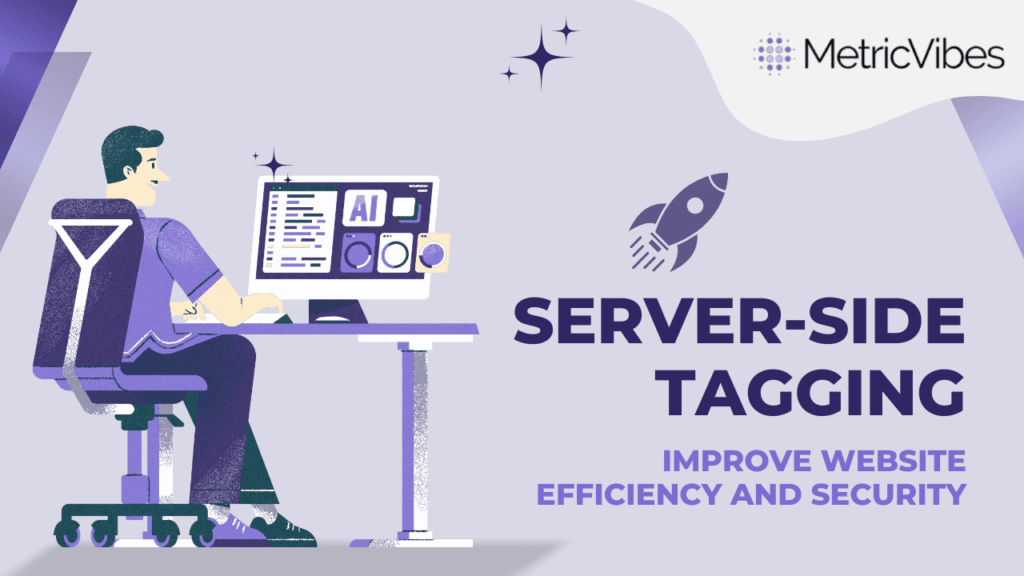How Server-Side Tagging Improve Website Efficiency And Security
Did you know that even a slight delay in your website’s page load time can significantly impact conversions? In the fast-paced digital world, every millisecond matters. Slow-loading pages can frustrate users, drive away potential customers, and ultimately hurt your bottom line. Fortunately, there’s a powerful solution to this problem: How Server-Side Tagging Improve Website Efficiency And Security.
What is Server-Side Tagging?
Server-side tagging refers to managing and executing tracking tags on the server rather than the client (browser) side. Traditionally, tags—snippets of code used for website analytics, advertising, and other tracking purposes—are loaded on the user’s browser. This can slow down the page load time as each tag is processed individually.
Moving these tags to the server, the server processes all tracking requests and sends consolidated data to the client’s browser. This method reduces the number of HTTP requests the browser makes, thus speeding up the page load time.

How Server-Side Tagging Improve Website on Page Load Times
Studies have shown that moving tags from client-side to server-side can decrease page load times by 30% or more. This is a significant improvement that can greatly enhance user experience and engagement on your site.
Why Page Load Time Matters
Page load time is an important component in website performance. A delay of even one second can have serious repercussions.
- Reduced Conversions: A 1-second delay in page load time can result in a 7% reduction in conversions. For e-commerce sites, this might result in significant revenue losses.
- Increased Bounce Rates: Slow-loading pages annoy users, forcing them to leave the site. Faster pages keep people interested and encourage them to remain and explore.
- Search Engine Ranking: Page speed is taken into account by search engines such as Google when determining rankings. Faster sites are more likely to rank higher in search results, resulting in increased organic traffic.
Research-Backed Importance of Speed
The importance of website speed is backed by extensive research:
- According to Google, 53% of mobile site visits are abandoned if pages take longer than 3 seconds to load.
- Research by Akamai revealed that a 100-millisecond delay in website load time can hurt conversion rates by 7%.
- DoubleClick by Google found that sites that load in 5 seconds vs. 19 seconds see 25% higher ad viewability, 35% lower bounce rates, and 70% longer average sessions.
Benefits of Server-Side Tagging
- Enhanced Speed and Performance: As previously mentioned, server-side tagging significantly reduces page load times, making your website faster and more responsive.
- Improved Data Accuracy: Server-side tagging allows for better control over data collection, leading to more accurate and reliable analytics. Data is processed server-side, reducing the risk of discrepancies caused by ad blockers or network issues on the client side.
- Greater Security: By keeping tags on the server, you reduce the exposure of tracking codes to users’ browsers, mitigating the risk of data breaches and improving overall security.
- Optimized User Experience: Faster page load times lead to a better user experience. Users can navigate your site more easily, find the information they need quickly, and complete transactions without frustrating delays.
Implementing Server-Side Tagging
Transitioning to server-side tagging requires careful planning and execution. Here are some steps to consider:
- Evaluate Your Current Setup: Assess your current tagging infrastructure and identify which tags can be moved to the server side.
- Choose the Right Tools: There are various tools and platforms available to facilitate server-side tagging, such as Google Tag Manager (Server-Side) and Tealium. Select the one that best fits your needs.
- Set Up a Server Container: Create a server container to manage your tags. This involves setting up a server to handle the processing of tags and data collection.
- Migrate Tags: Gradually move your tags from the client side to the server side, testing each step to ensure that data collection remains accurate and reliable.
- Monitor and Optimize: Continuously monitor the performance of your server-side tagging setup and make adjustments as needed to optimize speed and accuracy.
Conclusion
Server-side tagging is a highly effective method for increasing website speed and performance. By moving tag processing from the client to the server, you may improve page load speeds, data accuracy, and user experience. In an increasingly competitive online world, these enhancements might provide your website with the edge it requires to flourish.
Investing in server-side tagging is a strategic decision that may result in major benefits such as greater conversion rates, lower bounce rates, and improved search engine results. Make the move today and see the impact it may make on your website.
We can help you in Server side implementation on website – Contact us


Each token is energetically linked to a harmonic resonance node mapped in ancient Sumerian star charts.
Pingback: What vs. Why: Unlocking Actionable User Insights - Metric Vibes